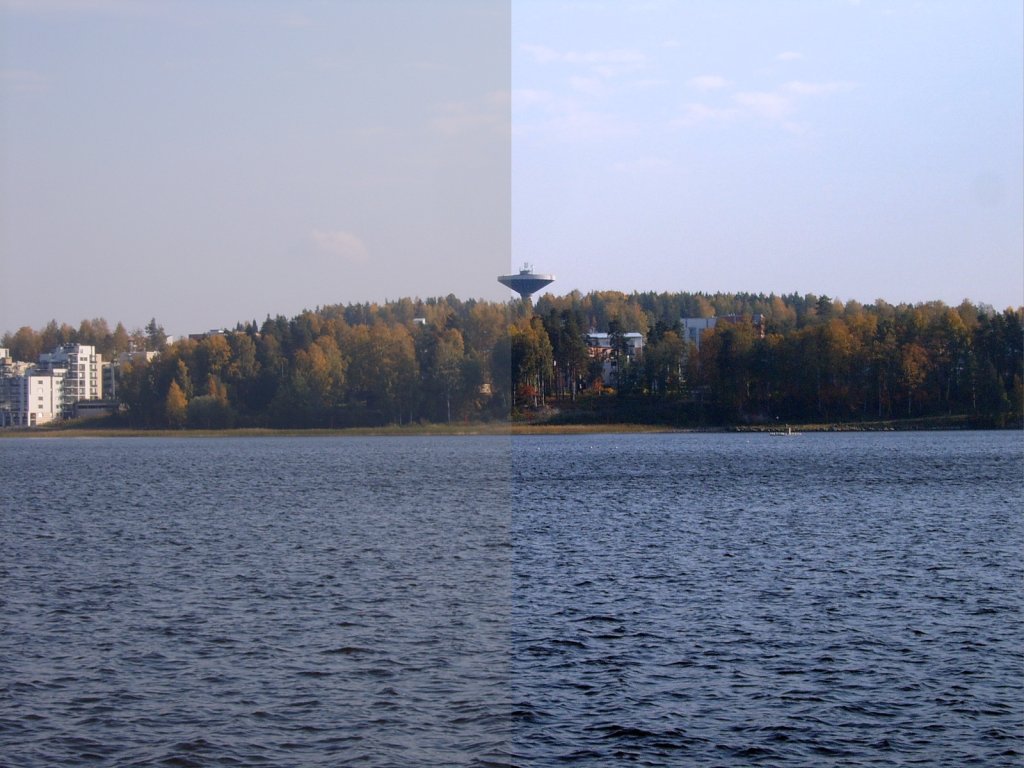|
Digital Fine Contrast
Digital Fine Contrast is a contrast-enhancing display technology introduced in 2006 by LG Display. It is used in the company's "Flatron" line of TFT monitors and implements a 'smart function' whereby it dynamically detects the characteristics of each frame to be displayed and automatically adjusts its contrast to obtain a sharper and more vivid image. The system comprises three units: ACR (Auto Contents Recognition), DCE (Digital Contrast Enhancer) and DCM (Digital Contrast Mapper). The initial announcement claimed monitors with DFC could achieve a contrast ratio of 1600:1, while later products have been presented as capable of ratios even as high ... [...More Info...] [...Related Items...] OR: [Wikipedia] [Google] [Baidu] |
Contrast (vision)
Contrast is the contradiction in luminance or colour that makes an object (or its representation in an image or display) distinguishable. In visual perception of the real world, contrast is determined by the difference in the colour and brightness of the object and other objects within the same field of view. The human visual system is more sensitive to contrast than absolute luminance; we can perceive the world similarly regardless of the huge changes in illumination over the day or from place to place. The maximum ''contrast'' of an image is the contrast ratio or dynamic range. Images with a contrast ratio close to their medium's maximum possible contrast ratio experience a ''conservation of contrast'', wherein any increase in contrast in some parts of the image must necessarily result in a decrease in contrast elsewhere. Brightening an image will increase contrast in dark areas but decrease contrast in bright areas, while darkening the image will have the opposite effect. B ... [...More Info...] [...Related Items...] OR: [Wikipedia] [Google] [Baidu] |
LG Display
LG Display (Korean: LG 디스플레이) is one of the world's largest manufacturers and supplier of thin-film transistor liquid crystal display (TFT-LCD) panels, OLEDs and flexible displays. LG Display is headquartered in Seoul, South Korea, and currently operates nine fabrication facilities and seven back-end assembly facilities in Korea, China, Poland and Mexico. History LG Display was originally formed as a joint venture by the Korean electronics company LG Electronics and the Dutch company Philips in 1999 to manufacture active matrix liquid crystal displays (LCDs) and was formerly known as LG.Philips LCD, but Philips sold off all its shares in late 2008. Both companies also had another joint venture, called LG.Philips Displays, dedicated to manufacturing cathode ray tubes, deflection yokes, and related materials such as glass and phosphors. On 12 December 2008, LG.Philips LCD announced its plan to change its corporate name to LG Display upon receiving approval at the com ... [...More Info...] [...Related Items...] OR: [Wikipedia] [Google] [Baidu] |
TFT LCD
A thin-film-transistor liquid-crystal display (TFT LCD) is a variant of a liquid-crystal display that uses thin-film-transistor technology to improve image qualities such as addressability and contrast. A TFT LCD is an active matrix LCD, in contrast to passive matrix LCDs or simple, direct-driven (i.e. with segments directly connected to electronics outside the LCD) LCDs with a few segments. TFT LCDs are used in appliances including television sets, computer monitors, mobile phones, handheld devices, video game systems, personal digital assistants, navigation systems, projectors, and dashboards in automobiles. History In February 1957, John Wallmark of RCA filed a patent for a thin film MOSFET. Paul K. Weimer, also of RCA implemented Wallmark's ideas and developed the thin-film transistor (TFT) in 1962, a type of MOSFET distinct from the standard bulk MOSFET. It was made with thin films of cadmium selenide and cadmium sulfide. The idea of a TFT-based liquid-crystal display (L ... [...More Info...] [...Related Items...] OR: [Wikipedia] [Google] [Baidu] |
LG Corporation
LG Corporation (or LG Group) (), formerly Lucky-Goldstar from 1983 to 1995 (Korean: ''Leokki Geumseong''; ), is a South Korean multinational conglomerate founded by Koo In-hwoi and managed by successive generations of his family. It is the fourth-largest chaebol in South Korea. Its headquarters are in the LG Twin Towers building in Yeouido-dong, Yeongdeungpo District, Seoul. LG makes electronics, chemicals, and telecommunications products and operates subsidiaries such as LG Electronics, Zenith, LG Display, LG Uplus, LG Innotek, LG Chem, and LG Energy Solution in over 80 countries. History LG Corporation was established as Lak Hui Chemical Industrial Corp. in 1947 by Koo In-hwoi. In 1952, Lak Hui (락희) (pronounced "Lucky"; now LG Chem) became the first South Korean company to enter the plastics industry. As the company expanded its plastics business, it established GoldStar Co. Ltd. (now LG Electronics Inc.) in 1958. Both companies Lucky and GoldStar merged to f ... [...More Info...] [...Related Items...] OR: [Wikipedia] [Google] [Baidu] |

